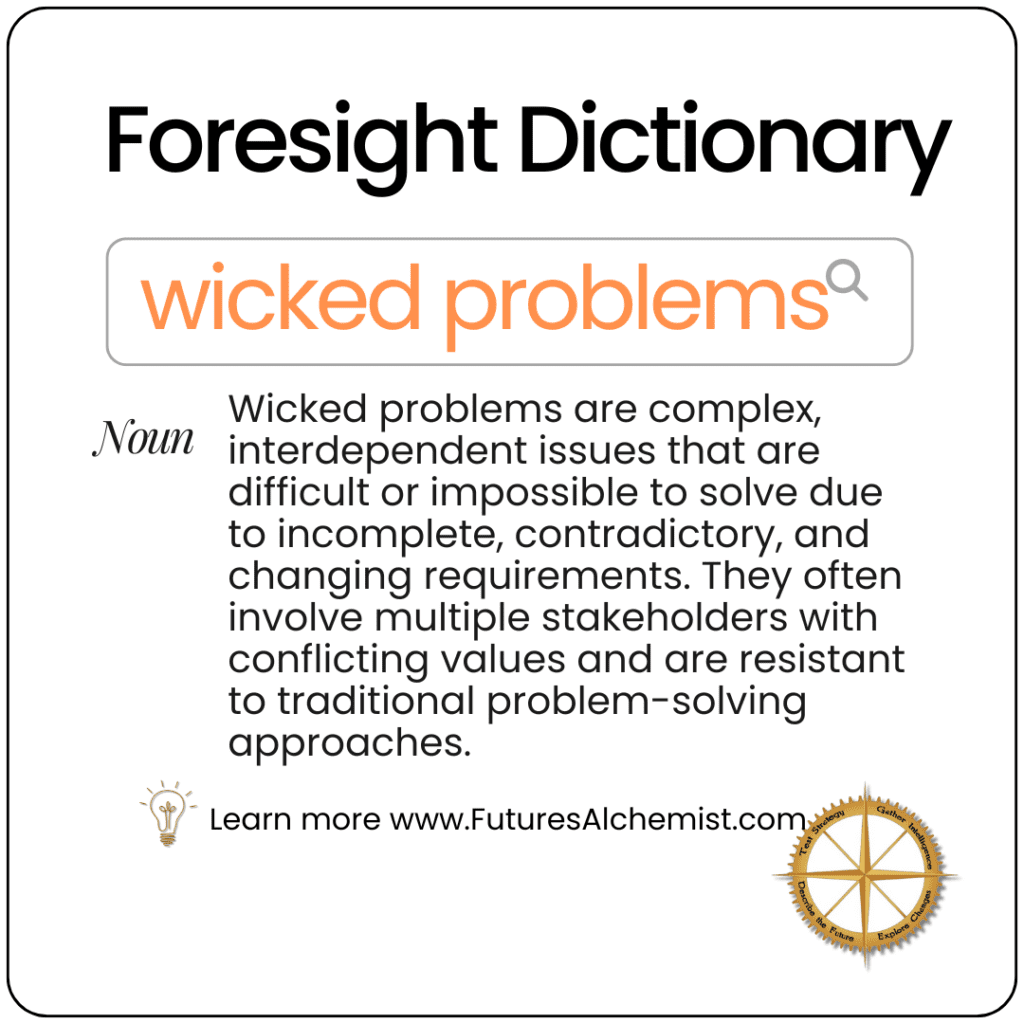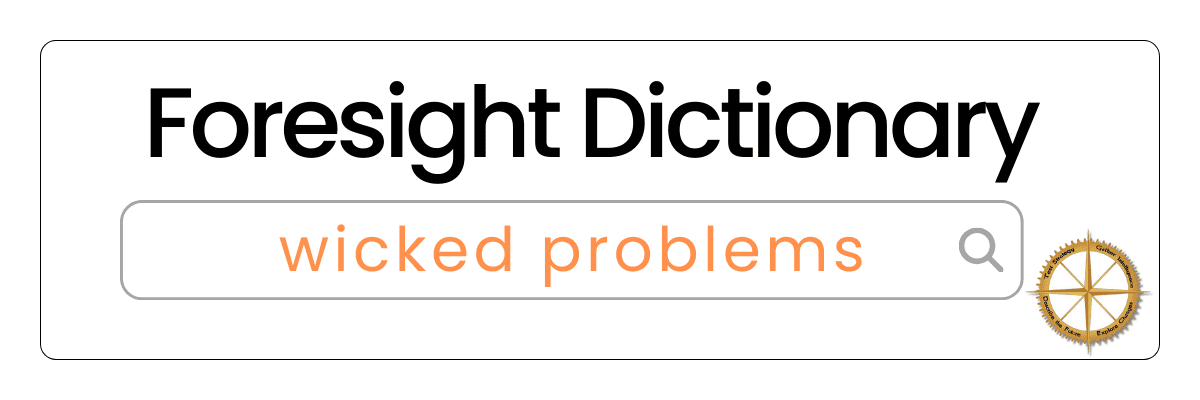

Definition
Wicked problems are complex, interdependent issues that are difficult or impossible to solve due to incomplete, contradictory, and changing requirements. They often involve multiple stakeholders with conflicting values and are resistant to traditional problem-solving approaches.
Example
Climate Change
Climate change is a classic example of a wicked problem. It involves complex interactions between environmental, economic, social, and political systems. There’s no clear solution, and attempts to address it often reveal or create other problems. It affects different regions and populations in varying ways, making it challenging to find a universally acceptable approach.
Other examples are the big issues: education design, financial crises, health care, hunger, income disparity, obesity, poverty, terrorism, and sustainability.
Ask yourself
- Are there multiple stakeholders with conflicting interests involved?
- Does the problem seem to change when you try to solve it?
- Is there no clear “right” or “wrong” solution?
- Does solving one aspect of the problem potentially create new problems?
- Is the problem interconnected with other issues?
- Does the problem lack a clear stopping point or definitive solution?
Tools
- Systems Thinking: Helps in understanding the interconnections within complex systems.
- Design Thinking: Encourages creative problem-solving and iterative approaches.
- Causal Layered Analysis: Examines the problem at different levels of understanding.

Origin and Principles
The concept was first introduced in 1973 by design theorists Horst Rittel and Melvin Webber in their paper “Dilemmas in a General Theory of Planning.” They were professors of design and urban planning at the University of California, Berkeley.
Rittel and Webber initially used the term to describe the challenges of social policy planning. They argued that these problems couldn’t be solved with traditional linear, analytical approaches used in science and engineering. The word “wicked” in this context doesn’t mean evil, but rather resistant to resolution.
Rittel and Webber identified ten characteristics of wicked problems:
- They have no definitive formulation.
- They have no stopping rule.
- Solutions are not true-or-false, but good-or-bad.
- There’s no immediate or ultimate test of a solution.
- Every solution is a “one-shot operation” with significant consequences.
- They have no enumerable set of potential solutions.
- Every wicked problem is essentially unique.
- Every wicked problem can be considered a symptom of another problem.
- The choice of explanation determines the nature of the problem’s resolution.
- The planner has no right to be wrong.




